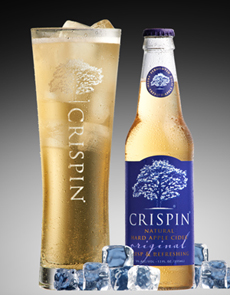TIP OF THE DAY: Try Cider Instead Of Beer
|
Instead of beer, try hard cider. It’s a natural for quaffing or food pairing, and replaces the flavors of malt and hops with apple or pear (cider made with pears is called perry). First, the difference between hard cider and fresh cider. |
Classic Crispin. Photo courtesy Crispin Cider Company. |
|
|
While it may not seem so today, America has a history of hard cider. The English who originally settled the country brought their love of cider, and America was a hard cider country until the 19th century. Then, waves of German immigration brought the lager makers, and soon enough more Americans were lifting steins of beer instead. Prohibition dealt hard cider a final blow from which it is just now making a comeback, with impressive annual growth figures. Aiding the effort is Boston Beer Company, makers of Samuel Adams beer and the Angry Orchard cider brand. Since Prohibition, “cider” in the U.S. has referred to the unfermented, unpasteurized apple juice; with “hard cider” used to indicate the alcoholic beverage. In the U.K. it is the opposite, with “cider” indicating the alcoholic drink for which special cider apples are used. CIDER VERSUS BEER Cider is a gluten-free option; beer is made from gluten-rich grains. However, beer is sugar-free, while cider can be quite high in sugar. |
||




